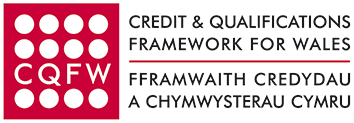| 1. |
Understand own responsibilities, and the responsibilities of others, relating to health and safety. |
|
| 1.1 | Identify legislation relating to health and safety in a health or social care work setting.
| | 1.2 | Explain the main points of health and safety policies and procedures agreed with the employer.
| | 1.3 | Analyse the main health and safety responsibilities of:
- self
- the employer or manager
- others in the work setting.
| | 1.4 | Identify specific tasks in the work setting that should not be carried out without special training. |
|
| 2. |
Be able to carry out own responsibilities for health and safety. |
|
| 2.1 | Use policies and procedures or other agreed ways of working that relate to health and safety.
| | 2.2 | Support others to understand and follow safe practices.
| | 2.3 | Monitor and report potential health and safety risks.
| | 2.4 | Use risk assessment in relation to health and safety.
| | 2.5 | Demonstrate ways to minimise potential risks and hazards.
| | 2.6 | Access additional support or information relating to health and safety. |
|
| 3. |
Understand procedures for responding to accidents and sudden illness. |
|
| 3.1 | Describe different types of accidents and sudden illness that may occur in own work setting.
| | 3.2 | Explain procedures to be followed if an accident or sudden illness should occur. |
|
| 4. |
Be able to reduce the spread of infection. |
|
| 4.1 | Explain own role in supporting others to follow practices that reduce the spread of infection.
| | 4.2 | Demonstrate the recommended method for hand washing.
| | 4.3 | Demonstrate ways to ensure that own health and hygiene do not pose a risk to an individual or to others at work. |
|
| 5. |
Be able to move and handle equipment and other objects safely. |
|
| 5.1 | Explain the main points of legislation that relates to moving and handling.
| | 5.2 | Explain principles for safe moving and handling.
| | 5.3 | Move and handle equipment and other objects safely. |
|
| 6. |
Be able to handle hazardous substances and materials. |
|
| 6.1 | Describe types of hazardous substances that may be found in the work setting
| | 6.2 | Demonstrate safe practices for:
- storing hazardous substances
- using hazardous substances
- disposing of hazardous substances and materials.
|
|
| 7. |
Be able to promote fire safety in the work setting. |
|
| 7.1 | Describe practices that prevent fires from:
| | 7.2 | Demonstrate measures that prevent fires from starting.
| | 7.3 | Explain emergency procedures to be followed in the event of a fire in the work setting.
| | 7.4 | Ensure that clear evacuation routes are maintained at all times. |
|
| 8. |
Be able to implement security measures in the work setting. |
|
| 8.1 | Demonstrate use of agreed procedures for checking the identity of anyone requesting access to:
| | 8.2 | Demonstrate use of measures to protect own security and the security of others in the work setting.
| | 8.3 | Explain the importance of ensuring that others are aware of own whereabouts. |
|
| 9. |
Know how to manage stress. |
|
| 9.1 | Describe common signs and indicators of stress.
| | 9.2 | Describe signs that indicate own stress.
| | 9.3 | Analyse factors that tend to trigger own stress.
| | 9.4 | Compare strategies for managing stress. |
|
